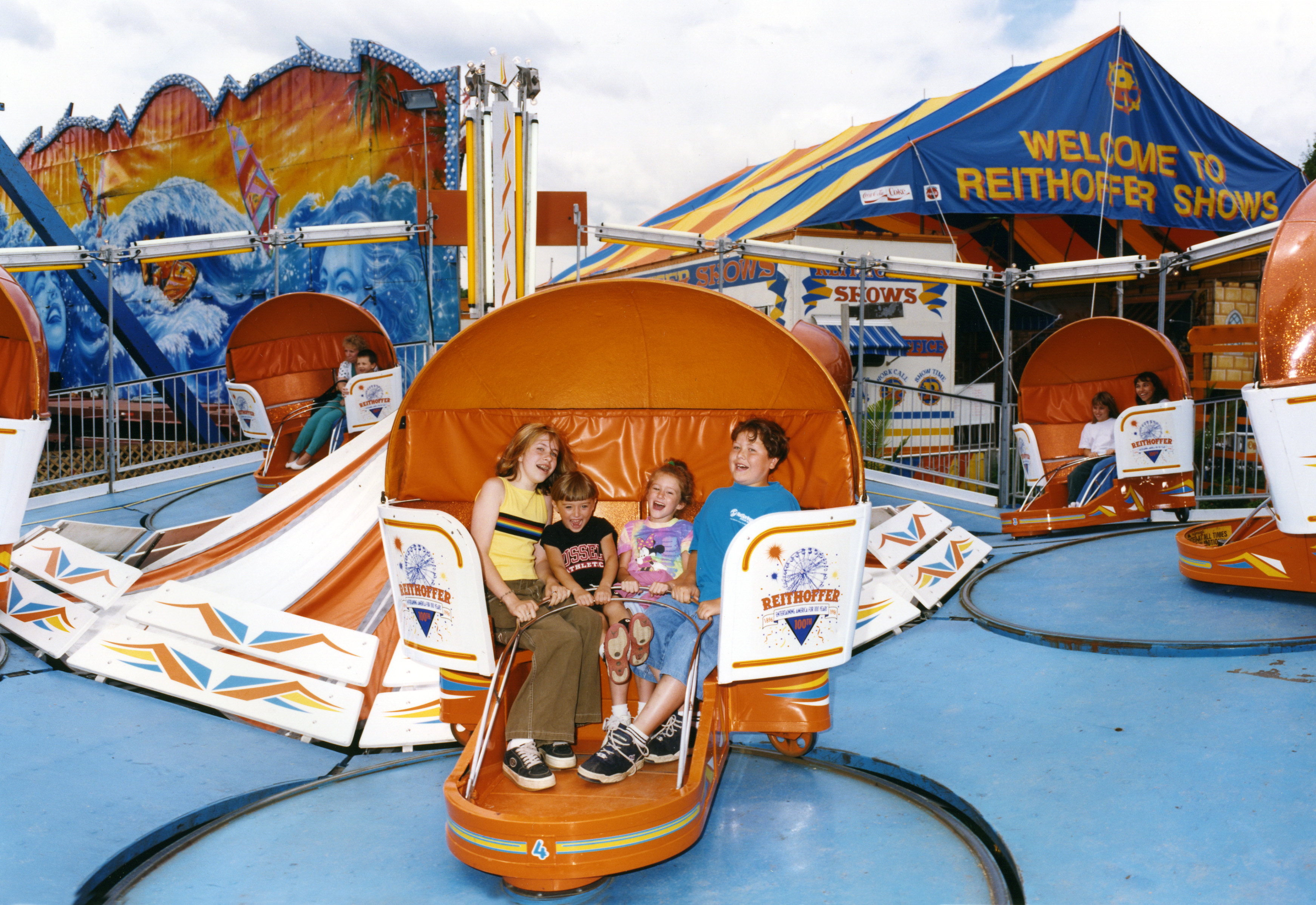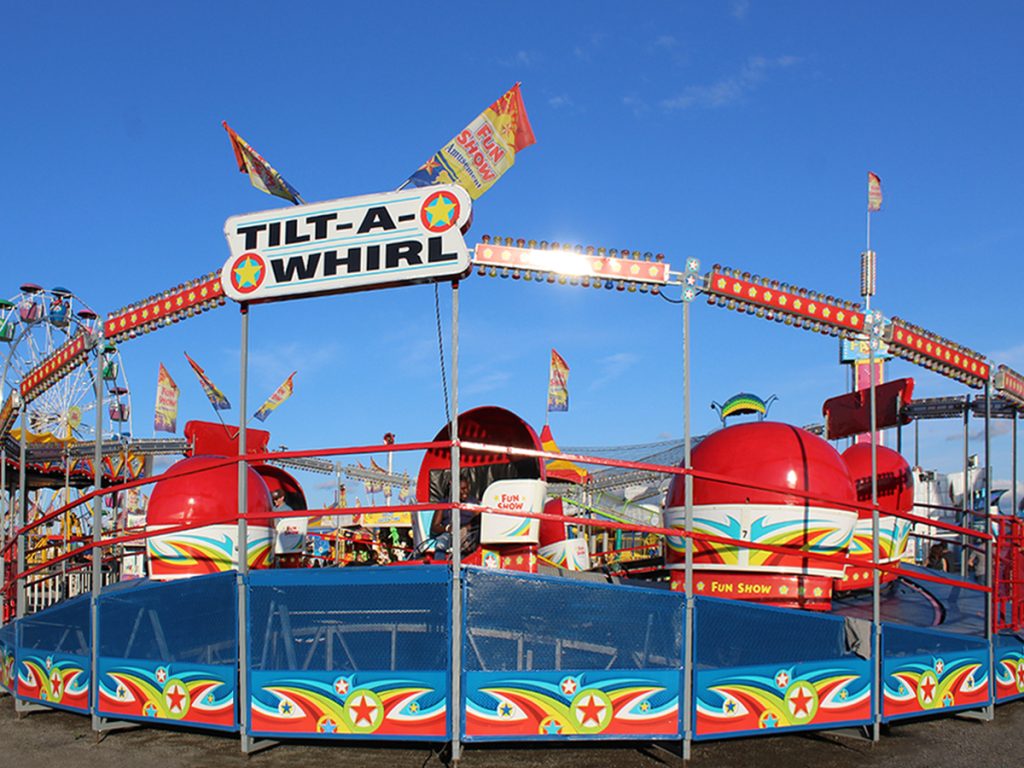Historical Evolution of Tilt-a-Whirls

Tilt a whirl – Tilt-a-Whirls have a rich and fascinating history, with their roots in the early days of amusement park rides. The first Tilt-a-Whirl was invented in 1926 by Herbert Sellner, a German immigrant who had come to the United States in search of a better life. Sellner was a skilled machinist and inventor, and he had always been fascinated by the mechanics of amusement park rides. He spent years developing his Tilt-a-Whirl, and when it was finally finished, it was an instant success.
Tilt-a-Whirl, with its dizzying ascent and abrupt drops, evokes the unpredictable nature of life. Like the underdog who rises against the odds, the Tilt-a-Whirl challenges our expectations. It reminds us that even in the most chaotic of rides, there’s always the potential for an exhilarating and unexpected victory.
The Tilt-a-Whirl quickly became one of the most popular rides at amusement parks around the world. It was a thrilling and exciting ride, and it was perfect for families and friends. Over the years, the Tilt-a-Whirl has undergone a number of changes, but the basic design has remained the same. The ride consists of a circular platform that is suspended from a central tower. The platform is tilted back and forth, and the riders are held in place by safety bars. As the platform spins, the riders are thrown up and down and from side to side.
The Tilt-A-Whirl’s dizzying spins and exhilarating drops are a testament to the transformative power of life’s unexpected turns. Like a rags to riches story, the ride takes us from humble beginnings to soaring heights, reminding us that even the most unassuming of experiences can hold the potential for extraordinary outcomes.
As we disembark, the Tilt-A-Whirl’s legacy lingers, reminding us to embrace life’s unexpected twists and turns, for they may lead us to unexpected and thrilling destinations.
Notable Tilt-a-Whirls
There have been many notable Tilt-a-Whirls throughout history. One of the most famous is the Tilt-a-Whirl at Coney Island in New York City. This Tilt-a-Whirl was built in 1927, and it is one of the oldest operating Tilt-a-Whirls in the world. Another famous Tilt-a-Whirl is the one at the Santa Cruz Beach Boardwalk in California. This Tilt-a-Whirl was built in 1924, and it is one of the most popular rides at the boardwalk.
Cultural Impact of Tilt-a-Whirls
Tilt-a-Whirls have had a significant cultural impact. They have been featured in movies, TV shows, and songs. They have also been used as symbols of amusement parks and carnivals. Tilt-a-Whirls are a reminder of the simple pleasures of life, and they continue to be a popular ride for people of all ages.
In the realm of amusement park rides, the Tilt-A-Whirl stands as an underdog, often overshadowed by its more thrilling counterparts. Its unassuming appearance and seemingly tame nature belie the unexpected exhilaration it offers. Much like the underdog in any competition, the Tilt-A-Whirl surprises and delights with its ability to deliver a memorable experience.
Underdog , by definition, refers to someone or something that is perceived as having a lower chance of success or victory. Yet, like the Tilt-A-Whirl, underdogs often defy expectations and emerge as triumphant.
Technical Specifications and Design Features
Tilt-a-Whirls are thrilling amusement rides that provide a unique blend of excitement and visual appeal. Their operation relies on a combination of mechanics and engineering principles, along with carefully considered design elements that contribute to their popularity.
The central mechanism of a Tilt-a-Whirl involves a rotating platform that carries multiple gondolas. These gondolas are attached to the platform by articulated arms, allowing them to tilt and spin independently as the platform rotates. The platform’s rotation is powered by an electric motor, which provides the necessary force to create the ride’s signature motion.
Speed and Capacity, Tilt a whirl
Tilt-a-Whirls typically operate at a speed of around 10 to 15 revolutions per minute (RPM). This speed provides a balance between excitement and safety, allowing riders to experience the thrill of the ride without feeling overwhelmed.
The capacity of a Tilt-a-Whirl varies depending on its size and design. Smaller models may accommodate around 16 to 24 riders, while larger models can accommodate up to 40 or more.
Safety Features
Safety is a paramount concern in the design and operation of Tilt-a-Whirls. These rides are equipped with a variety of safety features to ensure the well-being of riders.
- Over-the-shoulder restraints: These restraints securely hold riders in place during the ride, preventing them from being thrown out of the gondolas.
- Anti-rollback mechanisms: These devices prevent the platform from rolling backward in the event of a power failure or other malfunction.
- Emergency stop buttons: These buttons allow operators to quickly stop the ride in case of an emergency.
Design Elements and Aesthetics
Tilt-a-Whirls are not only mechanically impressive but also visually appealing. Their design incorporates vibrant colors, bold patterns, and eye-catching lighting to create a captivating experience.
The gondolas are often decorated with whimsical themes or characters, adding to the ride’s overall ambiance. The platform itself may feature intricate artwork or LED lighting, enhancing the visual impact and creating a memorable experience for riders.
Cultural Significance and Entertainment Value: Tilt A Whirl

Tilt-a-Whirls have become an iconic symbol of amusement parks, evoking nostalgia and excitement in people of all ages. They have been featured in numerous works of popular culture, including movies, TV shows, and music, solidifying their place as a beloved entertainment attraction.
Psychological and Emotional Responses
Riding a Tilt-a-Whirl elicits a range of psychological and emotional responses in riders. The spinning and tilting motion creates a sense of disorientation and exhilaration, often accompanied by laughter and screams. The ride’s unpredictable nature adds to the excitement, as riders never quite know what to expect next. Tilt-a-Whirls have also been known to trigger feelings of nausea in some individuals, making them a unique and thrilling experience.
Popular Culture
Tilt-a-Whirls have made numerous appearances in popular culture, often serving as a backdrop for memorable scenes or as a symbol of amusement park fun. Some notable examples include:
- In the movie “The Sandlot,” the boys spend an afternoon riding the Tilt-a-Whirl at the local amusement park.
- In the TV show “Stranger Things,” the characters visit a carnival where a Tilt-a-Whirl is prominently featured.
- In the song “Tilt-a-Whirl” by Bob Dylan, the ride is used as a metaphor for the ups and downs of life.
Tilt-A-Whirl’s exhilarating spins and drops bring to mind the frantic dance of Rumpelstiltskin as he spins straw into gold. The ride’s relentless momentum mirrors his desperation to fulfill his magical obligation, while the whirl of colors and lights echoes the chaos of his tumultuous world.
Yet, just as Rumpelstiltskin’s secret is eventually revealed, so too does the Tilt-A-Whirl’s cycle end, leaving behind a sense of both exhilaration and relief.
In the whimsical world of amusement parks, where Tilt-A-Whirls twirl and laughter fills the air, there exists a hidden narrative that mirrors the underdog’s tale. Just as the underdog, defined as one who faces adversity with resilience and determination underdog definition , the Tilt-A-Whirls embody the spirit of overcoming obstacles.
Their spinning cars, seemingly defying gravity, represent the underdog’s relentless pursuit of victory.